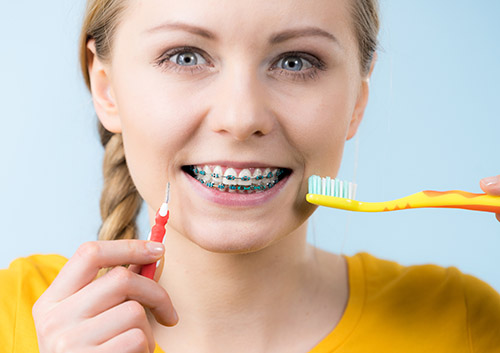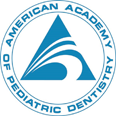Our Blog
Which mouthwash should you use?
October 22nd, 2025

Although using mouthwash is certainly not the equal of brushing and flossing, it does have benefits for your dental hygiene. If you use mouthwash regularly, you should find out which type is best suited for your needs. Here are some things to think about the next time you’re at the store.
The first item to weigh is why you want to use mouthwash. If the reason involves a high risk for cavities, you should focus on a mouthwash that contains fluoride. Make sure to double-check the label, because some mouthwashes do not necessarily include fluoride.
If you’re looking for a mouthwash to fight gingivitis, select an oral rinse with antibacterial properties. Make sure to read labels and avoid picking one that contains alcohol. Antibacterial mouthwash would also be best for a patient who has periodontal disease.
Another option is prescription mouthwash. These should be discussed with Drs. Cartsos and Zavras and/or your pharmacist in order to avoid negative side effects. Pay close attention to the directions regarding how much to use and for how long. Keep in mind that some brands may lose their effectiveness if you use them on an ongoing basis.
For children, you can find a mouthwash that changes the color of plaque on their teeth. This is a fun way to help them understand how well they are brushing, and what areas they need to focus on. It can even be a tool for adults who have trouble reaching certain areas of their mouth.
While mouthwash is generally considered as a safe means to improve your oral health, you need to keep certain things in mind. Avoid using any mouthwash that has alcohol in it. If you are using a strong one, it can reduce your sense of taste over time. Be wary of a mouthwash that claims it can loosen plaque; this is not accurate and can mislead consumers.
We hope these simple suggestions will help you the next time you’re at the store. Make sure you pick the right mouthwash to keep that healthy smile! Feel free to contact Drs. Cartsos and Zavras at our Chestnut Hill, Massachusetts with any questions you may have.
My toothbrush did what?
October 17th, 2025

If you were to put your toothbrush bristles under a high-powered microscope, what you would see might give you nightmares: millions of bacteria, busily crawling up and down your toothbrush bristles, consuming proteins that came from your mouth, and still clinging to the bristles even after you’ve rinsed them with water.
Rinsing your toothbrush after brushing removes some of those ferociously hungry bacteria, but not all. The American Dental Association says that bacterial infestations develop on toothbrushes within a month of daily use. The ADA also states that unless a toothbrush is sterilized before being packaged, it’s going to come with bacteria – free of charge!
Germs and Frayed Bristles: the Demise of a Toothbrush
Drs. Cartsos and Zavras and our staff recommend that you toss your old toothbrush in the trash and purchase a new one every three months. Children tend to bite on their toothbrushes, which makes the bristles degrade and fray faster. Chances are kids may need to have their toothbrushes changed more frequently.
Where do they hide?
Bacteria are tenacious little germs that head for those concealed areas between toothbrush bristles. They are highly adaptable and exist in every type of extreme environment. Some people actually go so far as to put their toothbrush in a microwave for a few seconds to kill germs, but this doesn't always work either. In fact, you may only end up with a toothbrush that’s as bendable as a Gumby doll – and still covered with germs.
Feed a Cold, Starve a Fever, and Get Rid of Your Toothbrush
When you have a head cold, your mouth is teeming with bacteria gleefully roaming around, and gobbling mucus and dead skin cells. If you brush your teeth while suffering a sinus condition, the brush will act like a magnet for ravenous bacteria. Use your old toothbrush while you are sick, but as soon as you feel better, throw it away and get a new one. Otherwise you could possibly re-infect yourself with the same cold germs!
Can Toothpaste Repair Tooth Decay?
October 17th, 2025

It seems like the ads are everywhere these days—repair your enamel and reverse tooth decay with a tube of toothpaste! Are these claims too good to be true? Let’s dive into the science of tooth decay—how decay develops and how (and if!) it can be reversed.
Teeth can stand up to the powerful pressures of biting and chewing because over 95% of our enamel is made up of minerals. Calcium and phosphate ions in our teeth bond to form a crystal structure called hydroxyapatite. Because of the strength of this crystalline design, tooth enamel is the hardest substance in our bodies, even stronger than our bones.
But bones, like most other parts of our bodies, are living tissue, which means that they can create new cells to replace old or damaged cells. Tooth enamel can’t regenerate new cells to repair itself. This means that when a cavity has made a hole in the tooth, the enamel can’t grow back. And, while enamel structure is very strong, it’s also vulnerable to damage—specifically, damage from acids.
Our teeth are exposed to acids throughout the day, whether they are acids created by plaque bacteria or the acidic foods and drinks we consume. Acids dissolve mineral bonds, stripping calcium and phosphate minerals from the enamel and leaving weak spots in the tooth surface. This process is called demineralization. Demineralization is the first stage of tooth decay.
The good news? Our bodies are designed with a built-in defense mechanism to prevent demineralization from causing lasting damage. All through the day, saliva helps wash away acids in the mouth and bathes our teeth with new calcium and phosphate ions. These ions bond with the calcium and phosphate in our enamel, restoring enamel strength. This protective repair process is called remineralization.
Now for the bad news. In the tug of war between demineralization and remineralization, saliva can only do so much. If your diet is heavy with acids, if you don’t brush away acid-producing plaque bacteria regularly, if you eat a lot of the sugars and starches which feed plaque bacteria, the remineralizing effects of saliva can’t keep up with the demineralizing effects of acids.
The first visible sign of demineralization is often a white spot on the tooth where minerals have been stripped from enamel. Studies have shown that enamel-strengthening toothpaste can be effective in this very first stage of tooth decay. Toothpastes which advertise enamel repair generally contain one or more of these ingredients:
- Calcium Phosphate
- Hydroxyapatite
- Fluoride
Toothpastes with calcium phosphate or hydroxyapatite contain calcium and phosphate minerals, the building blocks of tooth enamel. Studies have suggested that these minerals can replace the calcium and phosphate ions stripped from enamel. These toothpastes may or may not contain fluoride, which is something you should discuss with your dentist before deciding on a specific toothpaste.
Fluoride toothpastes remineralize enamel—and more! Fluoride ions are attracted to the tooth’s surface, and, when fluoride ions join with the calcium and phosphate ions there, they form fluorapatite. Fluorapatite crystals are larger, stronger, and more resistant to acids than hydroxyapatite crystals. And, once bonded with tooth enamel, fluoride attracts the calcium and phosphate ions in saliva to remineralize the teeth more quickly.
Why consider enamel-repair toothpaste?
Once enamel is gone, it’s gone for good. If excess demineralization isn’t treated, a weak spot on the tooth surface will continue to erode, growing bigger and deeper until it becomes a hole in the enamel. This is a cavity, and your dentist will need to treat and repair your tooth to prevent the cavity from growing and potentially exposing the tooth’s pulp to bacteria and infection.
If you wear braces, you want to be especially careful about excess demineralization. Because it can be hard to brush and floss effectively with braces, white spots and discolored patches are a common concern for those with braces, especially on the enamel around brackets.
Talk to Drs. Cartsos and Zavras at our Chestnut Hill, Massachusetts office about which toothpastes can help restore a healthy balance between the ongoing cycles of demineralization and remineralization when you have braces. While tooth-repair toothpaste can’t fix cavities, these products can often strengthen demineralized enamel and reverse this earliest stage of tooth decay.









